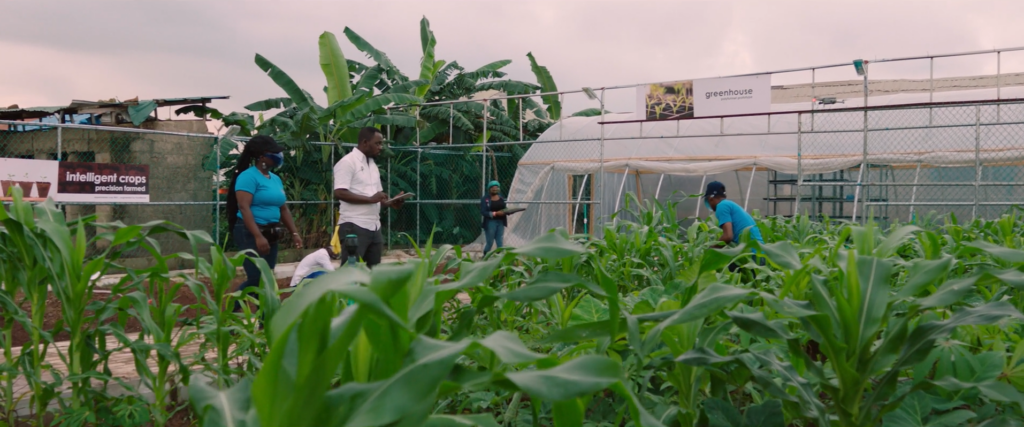FoodNerve is Enabling Communities Thrive with Innovation that Restores the Earth
It’s a catch-22: Land-based agriculture produces 97% of Africa’s food, yet two-thirds of currently productive cropland is becoming infertile from unsustainable practices. This worsens as farmers clear more forests for planting and burn crop stubble post-harvest. In Nigeria, the problem is particularly acute because some 80 million households also burn biomass (forest wood, crop stubble, and cow dung) for energy. Like gas thrown onto a fire, biomass usage further accelerates soil degradation and deforestation, which in turn drives erosion, flooding, and desertification. In the midst of this, 282 million people in Africa suffer malnourishment due in part to crops grown on nutrient-depleted farmlands.
Such a problem does not have a one-stop solution. That’s why the Food Innovation Nervecenter is combating this agricultural conundrum from a multi-faceted perspective: through a constellation of regenerative teaching growspaces, community-focused radio stations, solar mini grids, and innovation labs all integrated into a single holistic model to drive food abundance and avert the climate crisis. The Food Innovation Nervecenter has chosen to concentrate their work in southwest Nigeria because it serves as a microcosm for the issues plaguing the continent at large. First, the local population is equally split between urbanites and rural people. Second, extreme poverty and food insecurity are present (which, according to the initiative, drive the poorest rural residents to seek nutrition from eating mice and rats, leaving them vulnerable to rodent-borne diseases). Third, disorganized supply chains make farmers ill-equipped to predict demand. As a result, almost 75% of crop harvests are wasted, being food which could nourish the people most in need of nutrition. Despite this overwhelming waste, subsequent harvest cycles further lock farming communities into even more land degradation and malnutrition. What if the nutrients from these unsold harvests — that currently end up in dumps and landfills — could be revitalized into feeding malnourished households or restoring nutrient-depleted soils?
To transform this status quo, the team is currently implementing the FoodNerve vision, a blueprint for mobilizing communities to take immediate and concerted actions that sustainably nourish their growing population without further converting forests into agricultural land. Their larger goal is to deliver climate-resilient agrifood systems that will adequately nourish Africa’s projected 1.7 billion population, advance rural livelihoods, regenerate 35 million hectares of agricultural land and plant 15 million fruit and forest trees by 2030. Their model is based on grassroots partnerships built on trust, and they work closely with local communities.

FoodNerve has identified four ways to regenerate degraded farmlands, restore ecosystems, shift dietary habits, reduce food losses, and transition to efficient energy sources. First, at the core of their project is education: identifying indigenous and traditional soil health practices (many of which are highly regenerative, and that currently are, or have previously been, implemented regularly in Africa) and working with local communities to scale these sustainably profitable practices alongside modern planetary health techniques. Through teaching growspaces, arboretums, and broadcast medium, communities are being mobilized against bush-burning and to restore nutritious ecosystems, essentially changing worldviews. Their arboretums also germinate fruit-tree seedlings for communities to plant so that micro-nutrients can be accessed through fruits, for free by everyone within five years. Second, they are building commercial compost facilities to enable and teach rural farms to return biomass and night soil to the earth as mulch or compost after harvest. By composting crop stubble, uneaten food waste and cow dung, nutrient-dense soil is created which minimizes the need for inorganic fertilizer — thereby reducing farmer’s costs. Third, their Energy, Water and Utilities Access Cooperatives help rural communities switch to low-emissions energy sources like solar mini grids and water conservation techniques. Finally, they are reducing supply-chain linked food losses through their innovation lab and market exchange.
According to FoodNerve, their focus on grassroots partnerships and collaboration across the food systems value chain sets them apart from other agriculture-based initiatives in Nigeria. They note that external attempts to solve community problems have failed to achieve sustained change, due to the lack of incentives for indigenous communities to update their culture and traditions. Instead, FoodNerve approaches a systemic problem with dignity for, and interest in, the people who are the most impacted by it.
Learn more about FoodNerve.
